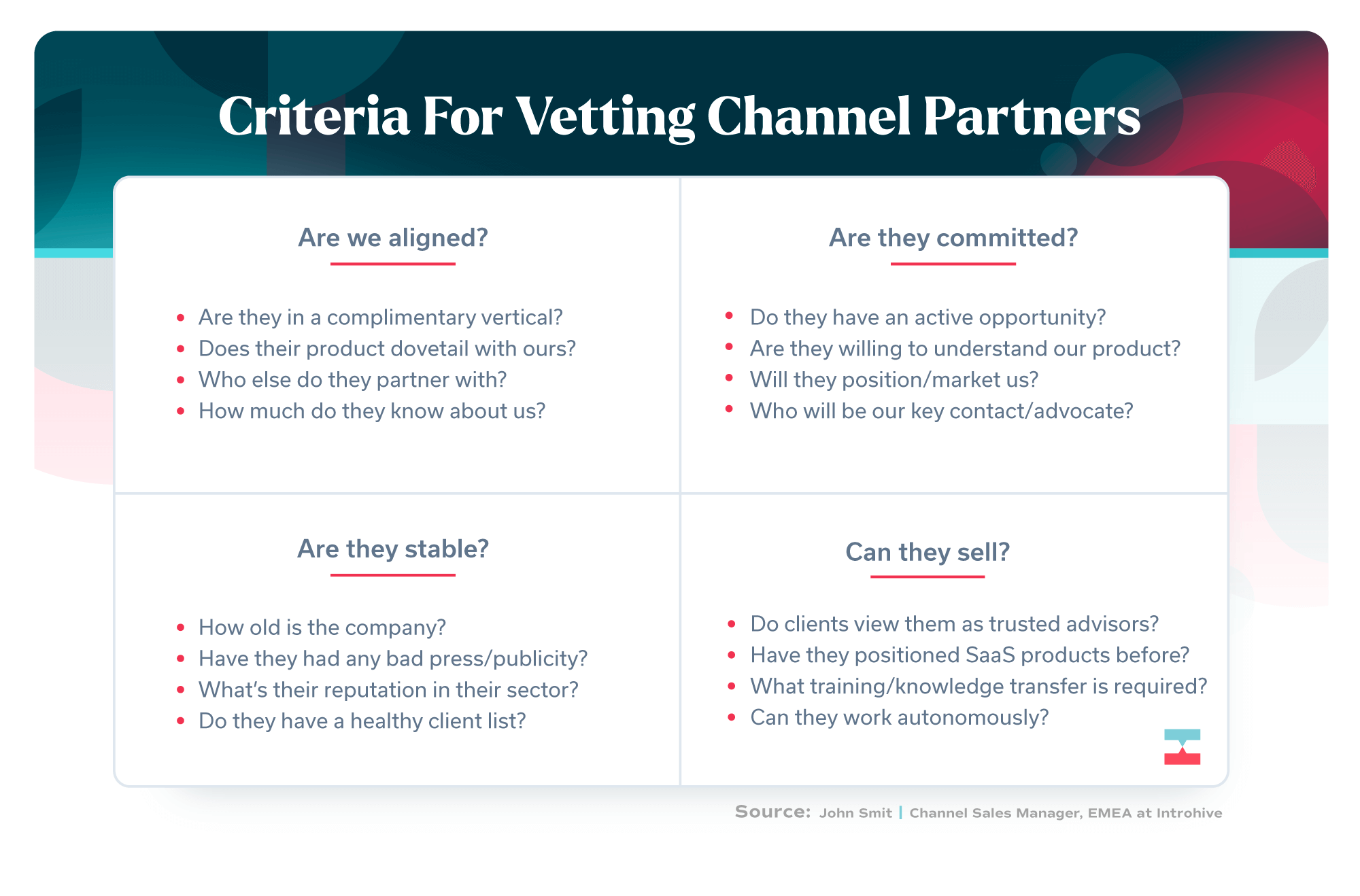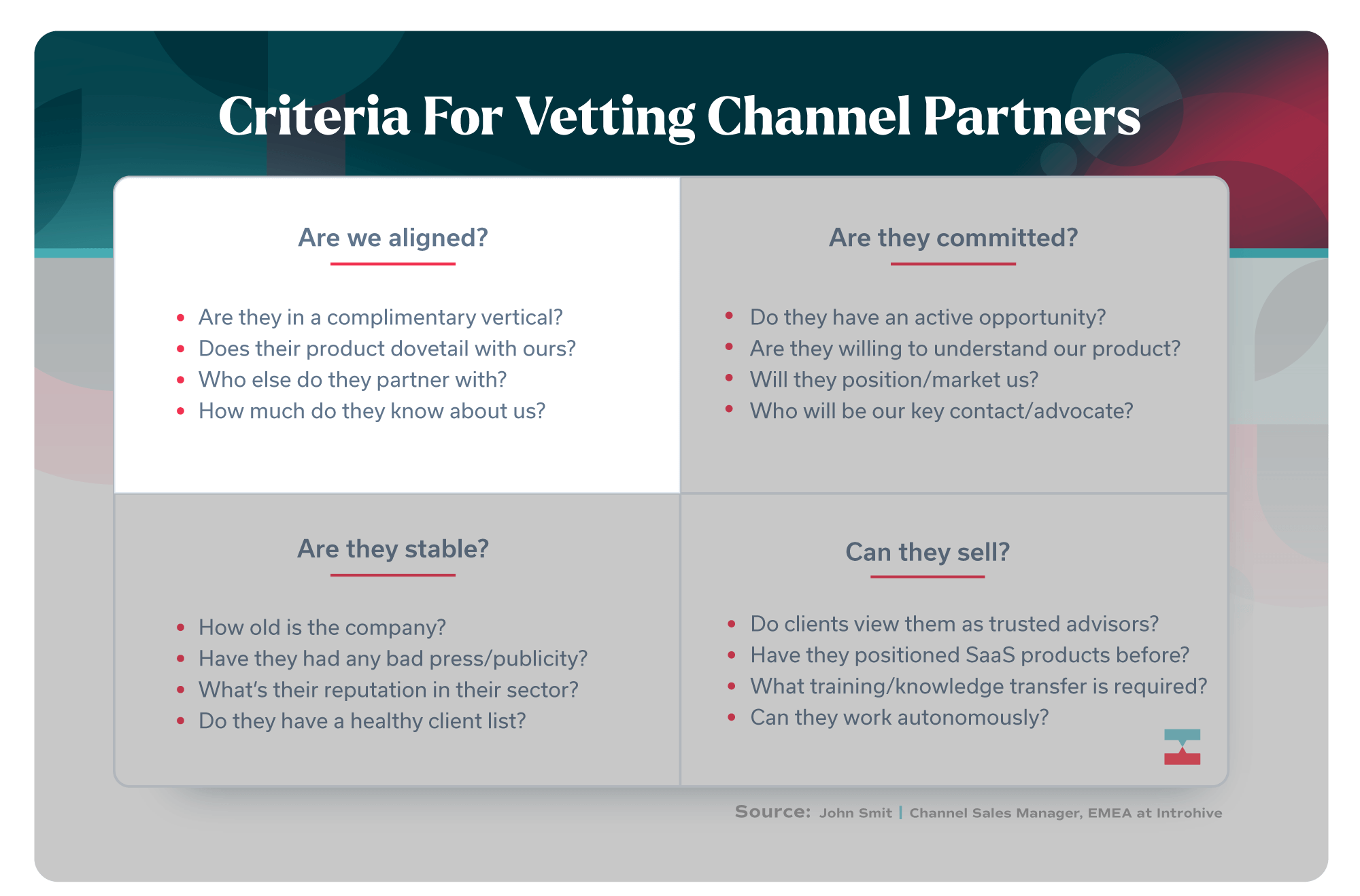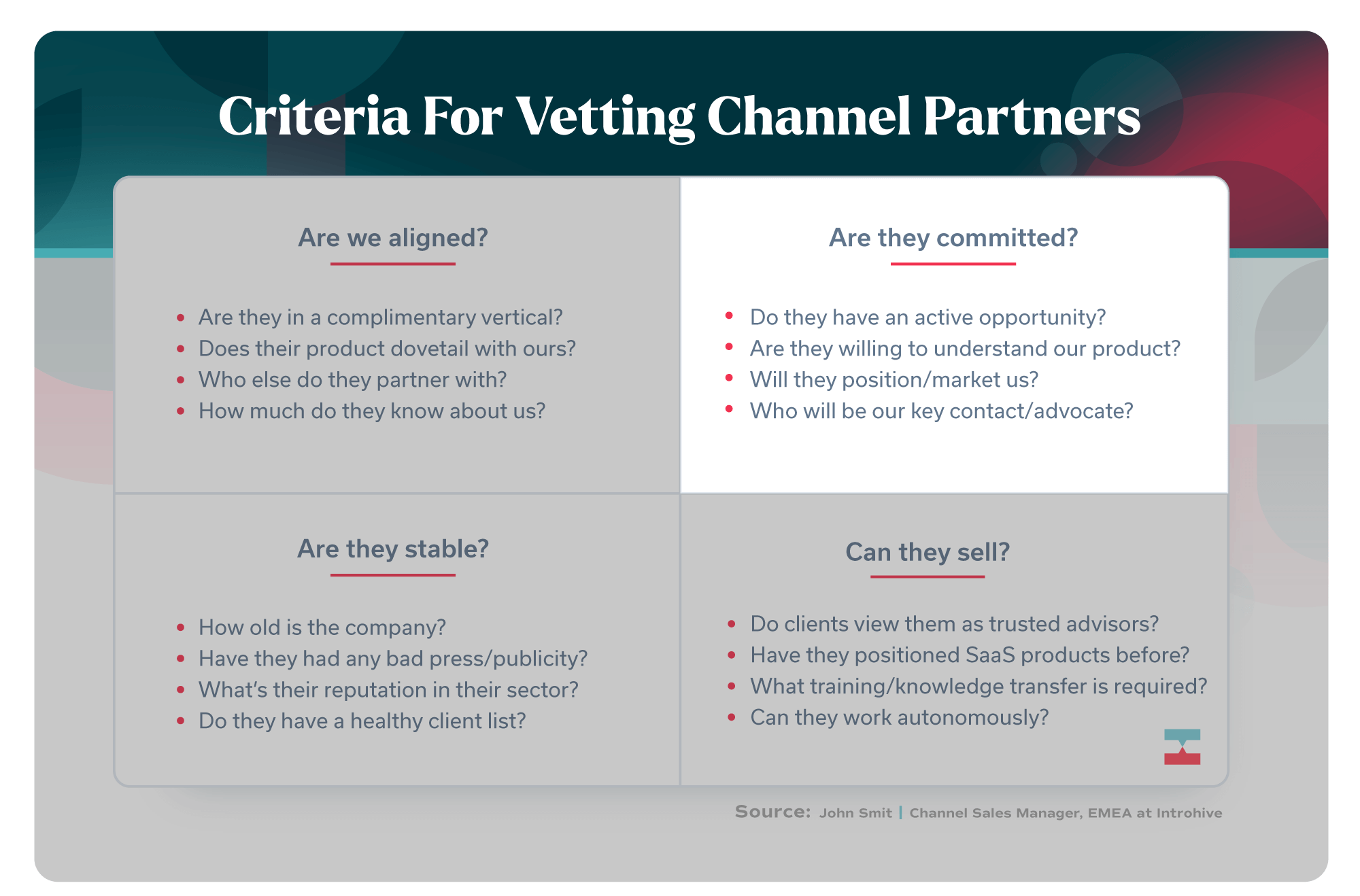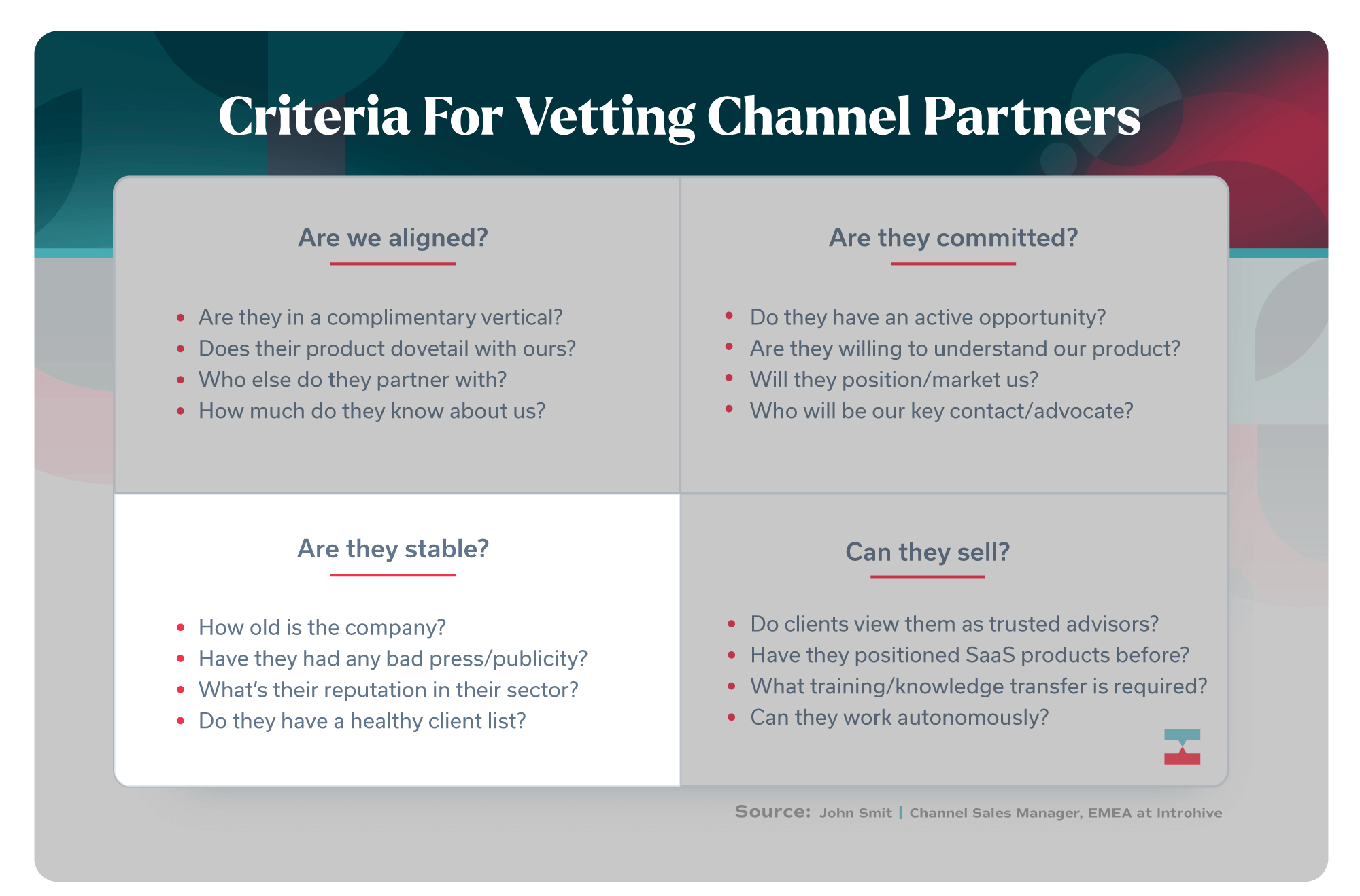When you look at your list of channel partners, do you feel overwhelmed because you don’t know which partners to prioritize and which to cut ties with?
Vetting and prioritizing your channel partners is like finally getting around to organizing your closet — just in a much bigger, money-making kinda way.
“But howwwwww,” says a frazzled partnerships manager in the distance.
 When John Smit joined Introhive as Channel Sales Manager, EMEA, one of his first priorities was to sort through and prioritize approximately 200 channel partners in the company’s database. Eighteen or so partners were already active and thriving in selling Introhive’s revenue acceleration platform, but Smit knew there were other equally valuable partners ready to co-sell with the right resources and stakeholders at their side.
When John Smit joined Introhive as Channel Sales Manager, EMEA, one of his first priorities was to sort through and prioritize approximately 200 channel partners in the company’s database. Eighteen or so partners were already active and thriving in selling Introhive’s revenue acceleration platform, but Smit knew there were other equally valuable partners ready to co-sell with the right resources and stakeholders at their side.
To uncover where Smit and the rest of the Introhive team should focus their efforts, they adopted a 4-criteria vetting process. The goal was to identify which partners Introhive should prioritize and dedicate more time and resources towards.
The vetting process includes four criteria:
Within three months of adopting this 4-criteria process, Smit’s team removed 150 partners from its database who either weren’t a strategic match, weren’t delivering a high volume of ecosystem qualified leads (EQLs), or weren’t delivering high quality leads. They’re now focusing on adding new channel partners through this vetting process.
This process also helped Introhive place its channel partners into their appropriate partner tiers (Elite, Select, and Authorized) so Introhive knows exactly which partners to dedicate time to and how. As Introhive and its partner program grows, they continue to expand each criteria to satisfy its evolving channel partner needs.
As an independent software vendor (ISV), Introhive looks to its channel partners to sell its revenue acceleration platform to their shared prospects. These channel partners consist of system integrators (SIs) that audit, manage, and scale a variety of business components (like PWC) and managed service providers (MSPs) like Wilson Allen.
Throughout this article, you’ll learn how Introhive implemented each of the four criteria through an example with their Salesforce SI partner Upper Sigma. To note: Upper Sigma also has a number of software products that they position as a joint solution with Introhive’s platform while co-selling to their shared prospects.
CRITERIA #1: ALIGNMENT
A common criteria when it comes to vetting partnerships: Does your ideal customer profile (ICP) align with your partner’s ICP? Do your brands align? Are you working towards similar long-term business goals?
Smit asks these questions to validate if a partner is a good fit for Introhive’s channel partner program.
- Is the partner in a complimentary vertical or a vertical we’re looking to break into? (For Introhive, complimentary spaces include legal and sales enablement.)
- Does the partner’s product dovetail with ours? (For channel partners that are also ISVs, can we offer a joint solution that aligns with the services they’re offering?)
- Who else is the partner partnered with? (Do those partners also have products or services complementary to our products?)
- How much does the partner know about Introhive as a product, our customers’ pain points, and relevant joint solutions?
In addition to broaching these questions in his team’s initial conversation with the partner, Smit uses Crossbeam to validate that the partner’s target accounts are similar to Introhive’s.
There are two main ways you can use Crossbeam to vet a partnership:
- Identify the overlap count between your account lists and your partner’s. If you and your partner are interested in co-selling together, for example, compare your prospects list to your partner’s prospects, opportunities, or customers list to see if you have a high number of accounts in common.
- Map a shortlist of strategic target accounts to your partner’s prospects, opportunities, or customers list. The resulting overlaps are the accounts you and your partner can sell to together or that your partner can provide an intro or referral into.
“That’s where Crossbeam is absolutely essential for us,” says Smit.
Introhive’s Salesforce SI partner Upper Sigma targets accounts in the same vertical and that have a high match to Introhive’s ideal customer profile (ICP) — companies with 100 or more employees. On top of that, Upper Sigma is fluent in Introhive’s product since its team uses Introhive internally.
CRITERIA #2: COMMITMENT
A high overlap count means nothing without a process behind it. Smit says to gauge your partner’s commitment before signing the partnership agreement.
Smit asks potential channel partners to participate in training and enablement sessions to get a better understanding of Introhive’s product before going all in. Meanwhile, Smit’s team participates in training sessions to learn about the partner’s product as well.
The partner’s ability and willingness to provide Introhive’s team with what they need and to put the time in for their own team to get up to speed is a positive sign that they’re committed to the success of the partnership.
This is also an opportunity for Smit to identify gaps to fill or areas for improvement. For example, if new partners need a better understanding of Introhive’s use cases, the Introhive team can help educate them or connect them with a services partner that has firsthand context in implementing the product around those use cases.
Additionally, Smit discusses co-marketing opportunities with the partner at this time. Generally this includes a verbal agreement to collaborate on a virtual or in-person event, LinkedIn advertising, press release, or other co-marketing activity. This commitment helps to ensure the partner is dedicated to working together for the long-term and not simply going to pass a couple of leads over and then move on.
All of the above conversations can generate early wins that help:
- Forecast the success of the partnership through early metrics
- Get each partner’s team bought in
- Build the foundational stepping stones for each team to co-sell and co-market successfully through enablement sessions and by simply delineating responsibilities
“You have to get quick wins. The strength of any partnership is based on both sides seeing value from the outset,” says Smit.
Introhive’s partner Upper Sigma uses Introhive’s product, so they’re well versed in its capabilities. On top of that, Upper Sigma’s team is available for additional trainings and demos to learn new product functionalities and use cases. Historically, Upper Sigma has had consistent success in educating potential customers about Introhive’s product and often sends pre-qualified opportunities to Introhive’s sales team with minimal effort needed from them earlier in the sales cycle.
CRITERIA #3: STABILITY
If your potential partner’s brand doesn’t align with yours, or if your partner’s new to the industry or verticals you’re targeting, you’re likely going to run into some hurdles.
The stability of your partner’s company can determine how much or what kind of influence they have in helping you expand to existing or new markets.
Some factors that can determine your partner’s stability in the market include:
- The length of time your partner’s company has been in business/in the particular market (A company with a well-established brand may have more built-in trust and influence with customers.)
- What your partner’s best and worst publicity looks like (Has your partner been mentioned negatively in the news in a way that’s hurting their ability to sell or could negatively affect your brand by association?)
- The strength of your partner’s reputation in their particular sector (Is your partner’s brand the first that comes to mind for people seeking services or products in its category?)
- The health of their client list (Are your partner’s clients actively using their services or products, is their team actively engaged with their customers, are their customers happy and renewing?)
In our example with Introhive’s partner Upper Sigma, Upper Sigma is an official Salesforce SI and thus a trusted brand by Salesforce, a supernode with more than 2,000 partners and more than 150K customers. Upper Sigma bakes Introhive’s product into many of its sales pitches and positions their products together as a joint solution. By association, Introhive wins the trust of Upper Sigma’s prospects.
CRITERIA #4: ABILITY TO SELL
All of the above criteria (Alignment, Commitment, and Stability) fold into your partner’s ability to sell.
Partner enablement is only one piece of your partner’s ability to sell. Your partner needs to complete relevant enablement training sessions and certification courses — And they need to have tech stack knowledge, industry expertise, and trust with potential customers to position your product effectively.
This all comes down to two things: a willingness to champion your product and Ecosystem Ops — a set of repeatable, scalable practices for collaborating with internal teams and partners.
Ecosystem Ops for co-selling often include:
- An established process for your partner’s sales reps to co-sell with their partner’s reps (For example: how, when, and how often their reps connect with partners)
- Internal sales enablement resources for co-selling with and on behalf of partners
- Tools, such as partner ecosystem platforms (PEPs) like Crossbeam to make identifying co-selling opportunities easier and faster
Learn about a potential partner’s Ecosystem Ops ahead of time so you get a sense of what it would be like to work with the partner and how your team may need to adapt. In some cases, you’ll need to establish new processes for working with partners; in others, your partner may have practices in place that you can also adopt or that require little to no additional work from your team.
A big part of Upper Sigma’s success (as mentioned in the Stability section) lies in its ability to manage the co-selling process reliably up until a certain point. After Upper Sigma hands the opportunity off to Introhive’s sales team, the Upper Sigma team continues to provide support for the remainder of the sales cycle. This sometimes involves providing Introhive’s sales team with additional context about the account (like about the prospect’s budget or pain points) or joining them on sales calls.
This level of control helps save Introhive’s sales team time and prevents them from needing to put out fires from inaccurate positioning or over-promising. Introhive can be confident that Upper Sigma’s team communicated the Introhive product to the prospect effectively and that they’ll be available to support them with the knowledge Upper Sigma has gained from the sales conversation thus far.
“Whenever they bring us a lead, we know there’s little to no qualification that needs to be done,” says Smit. “We know it’s a strong lead. They know the industry and the product inside out.”
When gauging your potential channel partner’s stability, consider:
- Is the partner a reliable consultant to potential customers?
- Will the partner carry some of the weight and save your internal team time?
- Does your partner position your product effectively and accurately (avoiding losing the deal early in the sales cycle or issues around misinformation later in the sales cycle)
- Is the partner able and willing to provide support to your sales team to close the deal
- Are the leads your partner is sending prequalified?
- Can your partner provide critical information about the account to support your sales team?
Another factor in the partner’s ability to sell? The number of deals attributed to the channel partner and the deal sizes. If you’re vetting a potential partner, pay attention to early metrics of success and how you can scale or build on those results through enablement programs, a more structured co-selling process, or other measures. If you’re evaluating an existing partner, continue to measure the results over time so your partnership remains successful.
“It’s almost like you’re interviewing for a new salesperson each time,” says Smit. “You’ve got to look at how well they can do that job.”
—
Want to take another channel partner vetting process for a spin? Check out this fill-in-the-blanks exercise with Allocadia for evaluating your partner program.









This is a test comment.
This is a longer test comment to see how this looks if the person decides to ramble a bit. So they're rambling and rambling and then they even lorem ipsum.